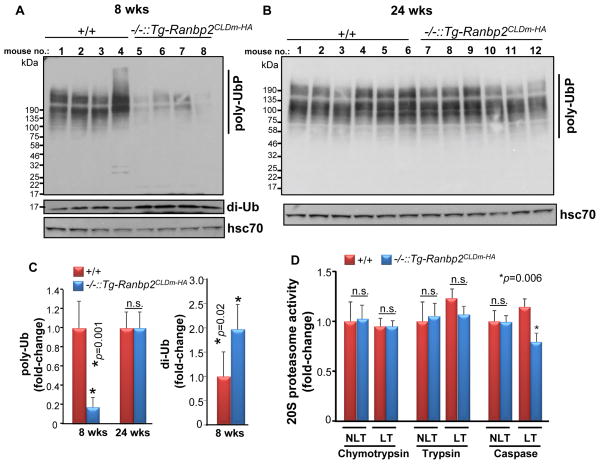Fig. 5.
Age-dependent accumulation of ubiquitylated substrates and diubiquitin, and 20S proteasome activities, between Ranbp2−/−::Tg-Ranbp2CLDm-HA and wild type mice exposed to light-stress. In comparison to wild type mice, Ranbp2−/−::Tg-Ranbp2CLDm-HA mice present decreased and increased levels of ubiquitylated substrates and diubiquitin, respectively, at 8 weeks of age (A, C), but their levels are similar between genotypes at 24 weeks of age (B, C). (D) Retinal extracts of 24 week-old Ranbp2−/−::Tg-Ranbp2CLDm-HA and wild type mice have similar chymotrypsin and trypsin-like activities of the 20S proteasome, but Ranbp2−/−::Tg-Ranbp2CLDm-HA have modestly lower caspase-like activity than wild type mice. Data shown represent the mean ± S.D., n=4–6. Legend: +/+, wild type; −/−::Tg-Ranbp2CLDm-HA, Ranbp2−/−::Tg-Ranbp2CLDm-HA; di-Ub, diubiquitin; poly-UbP, poly-ubiquitylated proteins; hsc70, heat shock cytosolic protein 70; n.s., non-significant.

